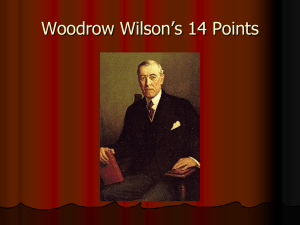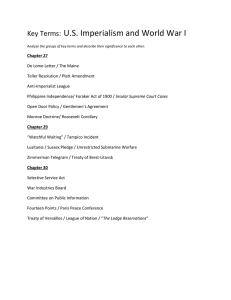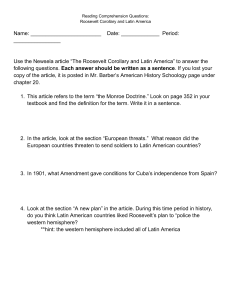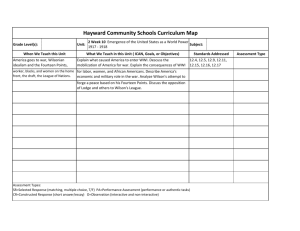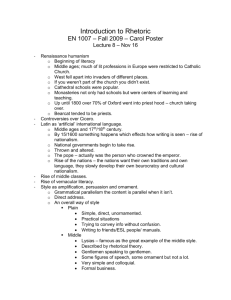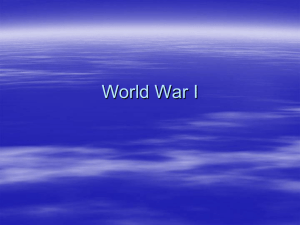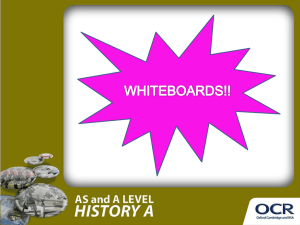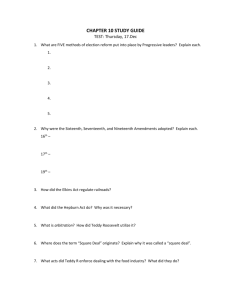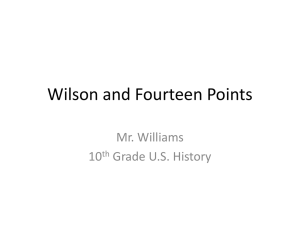Review for Test on Imperialism and WWI
advertisement
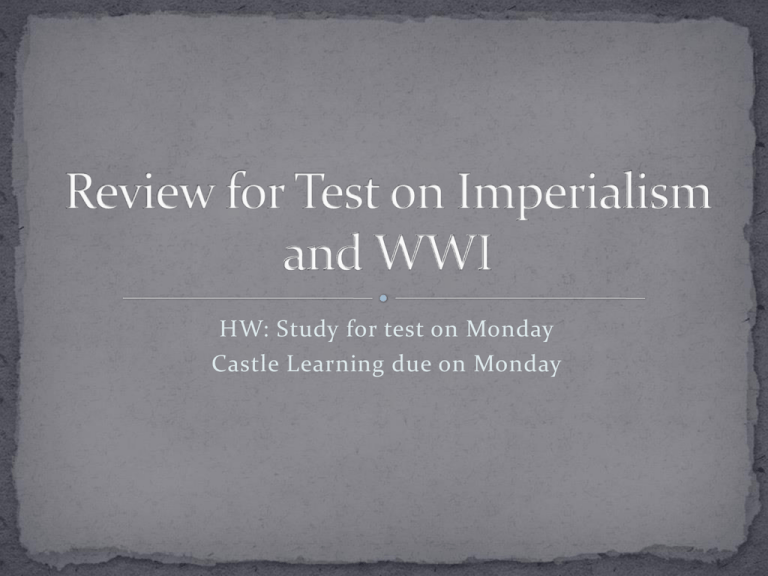
HW: Study for test on Monday Castle Learning due on Monday US became an imperialistic nation Gained Guam, Puerto Rico, Philippines, and Cuba. Exaggerated style of writing – used to persuade the US to enter the war “You provide the pictures, I’ll provide the war” Open trade with China – equal among all nations. Leads to Boxer Rebellion One country taking over another country for raw materials and markets. The US warns other nations to stay out of the western Hemisphere in order to protect newly independent nations. Roosevelt added to the Monroe Doctrine The US would act as a police power in the western hemisphere – Big Stick Policy. US built the canal for shorter trip – opens up trade and can protect newly acquired lands. Using “dollars” or investing in Latin America to gain power. Using the threat of force (the navy) to gain power in Latin America. The unrestricted submarine warfare used by the Germans. Sinking of the Lusitania Acts set up to punish people who spoke against the government. Wilson’s plan for peace – includes freedom of the seas, no secret treaties, no barriers to trade- most important thing – League of Nations. Plan for peace US DID NOT WANT TO JOIN!!!!!!!!! Afraid it would lead us into future wars. Established “Clear and Present danger.” Northern Migration - availability of factory jobs. Describe the conditions; explain the purpose of the President’s policy How did it protect the interests of the US? Roosevelt Corollary Big Stick Policy – using the navy as a threat of force to keep power in Latin America. Wilson’s 14 Points The 14 points/League of nations – His plan for peace after WWI – League of nations – US did not join, US did not sign Versailles Treaty –unhappy with Wilson about creating 14 points without the congress.
